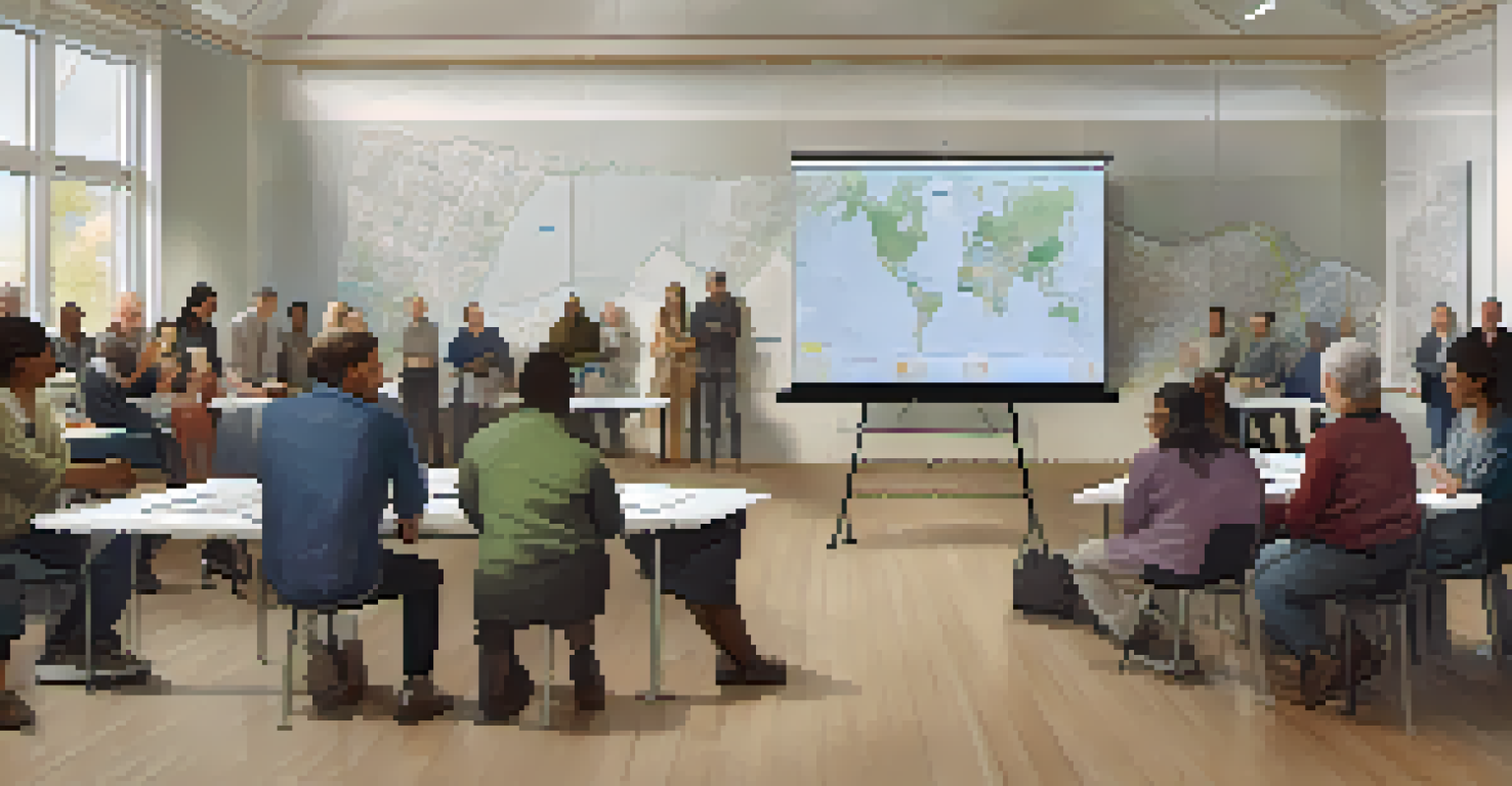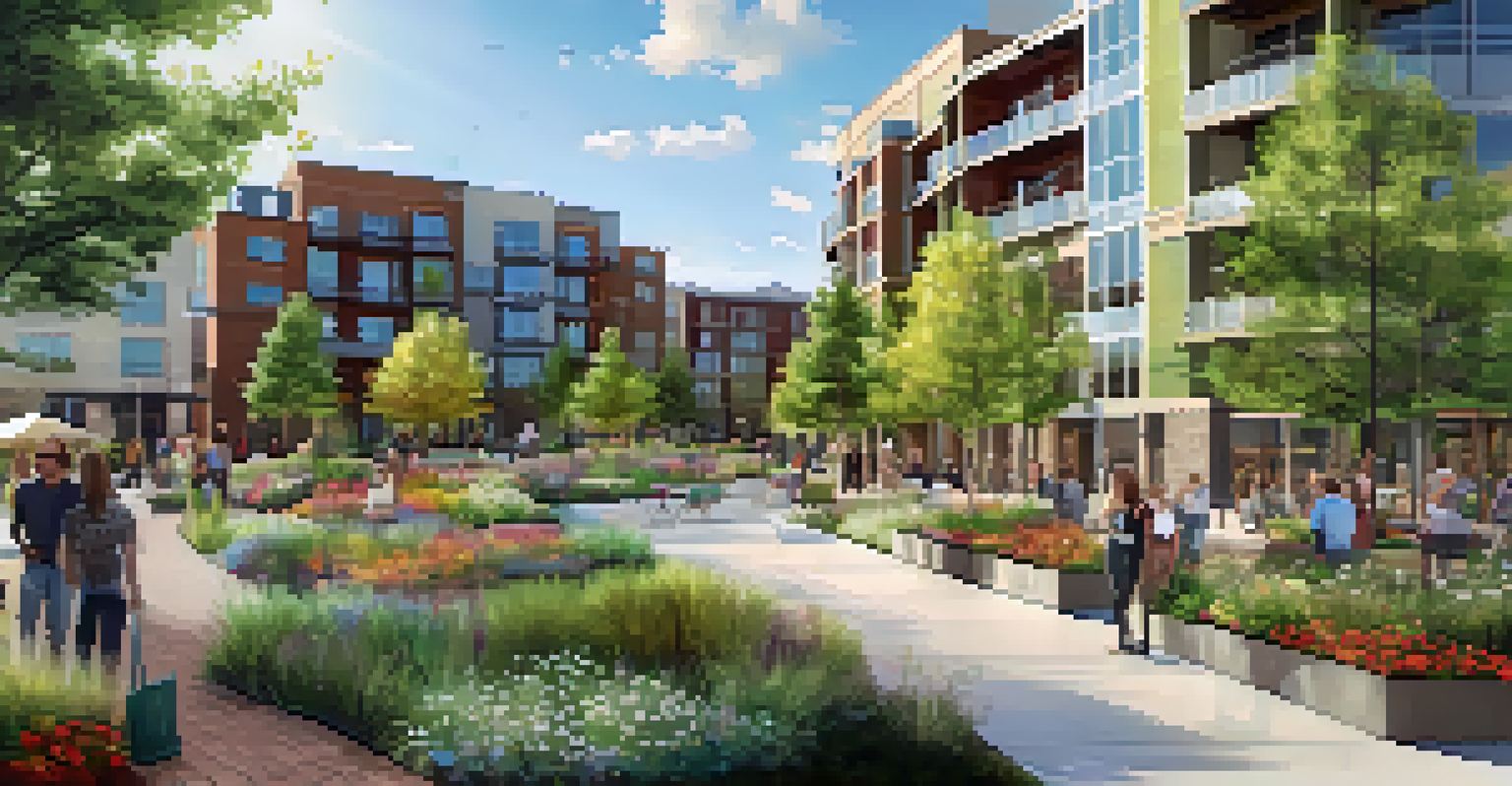The Role of Local Government in Colorado Land Use Planning

Overview of Land Use Planning in Colorado
Land use planning in Colorado involves a complex interplay of regulations and community needs. Local governments play a pivotal role in shaping how land is developed and utilized, ensuring that growth aligns with community values. This process not only impacts housing and business development but also affects environmental conservation and public services.
Land use planning is not just about managing land; it's about managing relationships between people and their environment.
In Colorado, land use decisions must consider a range of factors, including zoning laws, environmental concerns, and community input. Local governments, including cities and counties, are tasked with creating comprehensive plans that guide these decisions. This ensures that land is used efficiently while promoting sustainable growth.
As Colorado continues to experience population growth, effective land use planning becomes increasingly vital. Local governments must balance the needs of new residents with the preservation of the state's natural beauty and resources. The challenge lies in finding solutions that satisfy diverse interests while keeping the community's long-term vision in mind.
Key Players in Local Government Land Use Planning
Local governments in Colorado consist of various entities, including city councils, county commissions, and planning boards. Each plays a specific role in land use planning, from drafting regulations to approving development projects. Understanding who these players are helps clarify how decisions are made and who influences them.

City councils typically oversee urban areas and are responsible for zoning laws and land use regulations within city limits. Meanwhile, county commissions manage land use in unincorporated areas, often dealing with larger parcels of land that may include agricultural or open spaces. This division of responsibilities ensures that local needs are met.
Land Use Planning's Community Role
Effective land use planning in Colorado hinges on local governments balancing community needs with sustainable growth.
Planning boards often serve as advisory bodies, reviewing proposals and making recommendations to elected officials. Their expertise in land use planning helps inform decisions, ensuring they align with the community's goals. By working collaboratively, these key players can create a cohesive strategy for managing land resources.
Zoning Laws and Their Impact on Land Use
Zoning laws are essential tools that local governments use to regulate land use. These laws dictate how land can be used—whether for residential, commercial, or industrial purposes. By establishing zoning classifications, local governments can control density, building heights, and the types of activities allowed in different areas.
The best way to predict the future is to create it.
In Colorado, zoning laws also address issues like preserving open space and protecting natural resources. For instance, a city might implement zoning regulations that prevent overdevelopment in environmentally sensitive areas, helping to maintain the state's stunning landscapes. This balance is crucial for sustainable growth.
However, zoning laws can also lead to challenges, such as restricting housing availability or causing conflicts between developers and community members. As communities grow, local governments must regularly review and update these laws to adapt to changing needs and priorities. Engaging with residents during this process is key to fostering a sense of ownership and cooperation.
Public Participation in Land Use Planning
Public participation is a cornerstone of effective land use planning in Colorado. Local governments encourage community involvement to ensure that the needs and desires of residents are reflected in planning decisions. This collaborative approach helps build trust and fosters a sense of community ownership over local development.
Various methods are employed to engage the public, including community meetings, surveys, and workshops. These forums provide opportunities for residents to voice their opinions, ask questions, and contribute ideas. When community members feel heard, they are more likely to support planning initiatives and collaborate with local officials.
Public Engagement Shapes Planning
Active public participation in land use planning fosters community trust and leads to more inclusive policies.
Incorporating public feedback can lead to more informed and balanced land use policies. Local governments that actively seek input from diverse groups can create plans that better reflect the community's values and priorities. This inclusive approach not only enhances the planning process but also strengthens community bonds.
Sustainable Development Practices in Colorado
Sustainability is a critical consideration in Colorado's land use planning. Local governments are increasingly adopting practices that promote environmental stewardship and resource conservation. By prioritizing sustainable development, they aim to protect natural resources while accommodating growth.
One common practice is the incorporation of green building standards, which encourage energy-efficient designs and sustainable materials. Additionally, local governments often implement policies that promote mixed-use developments, reducing the need for extensive transportation infrastructure. This approach can lead to more vibrant, walkable communities.
Sustainable land use planning also involves preserving open spaces and natural habitats. By establishing parks and protected areas, local governments help maintain biodiversity and enhance residents' quality of life. These initiatives reflect a commitment to creating a livable environment that future generations can enjoy.
Challenges Facing Local Governments in Land Use Planning
Local governments in Colorado face numerous challenges in land use planning, especially as urban areas continue to grow. One significant issue is balancing the demand for housing with the preservation of open spaces. As more people move to Colorado, finding this balance becomes increasingly complex.
Another challenge is navigating the regulatory framework surrounding land use. Local governments must comply with state laws while also addressing local concerns, which can sometimes lead to conflicts. These complexities require careful consideration and collaboration among various stakeholders to achieve effective outcomes.
Sustainability Drives Future Policies
Sustainable development practices are becoming central to Colorado's land use planning as communities adapt to growth and environmental challenges.
Furthermore, funding can be a limiting factor in implementing land use plans. Local governments often rely on grants and public resources to support their planning initiatives. Without adequate funding, ambitious plans for sustainable development and community engagement may fall short, impacting overall effectiveness.
Future Trends in Colorado Land Use Planning
Looking ahead, several trends are shaping the future of land use planning in Colorado. One major trend is the increasing focus on smart growth principles, which prioritize efficient land use and transportation options. Local governments are recognizing the importance of creating interconnected communities that reduce reliance on cars.
Additionally, technology is playing a significant role in transforming land use planning processes. Geographic Information Systems (GIS) and data analytics allow local governments to make informed decisions based on real-time data. This technological integration can lead to more precise and effective planning strategies.

Lastly, climate change is prompting local governments to incorporate resilience into their land use planning. By preparing for potential impacts, such as wildfires and flooding, communities can develop more robust plans that safeguard both people and the environment. These proactive measures are essential for fostering a sustainable future in Colorado.